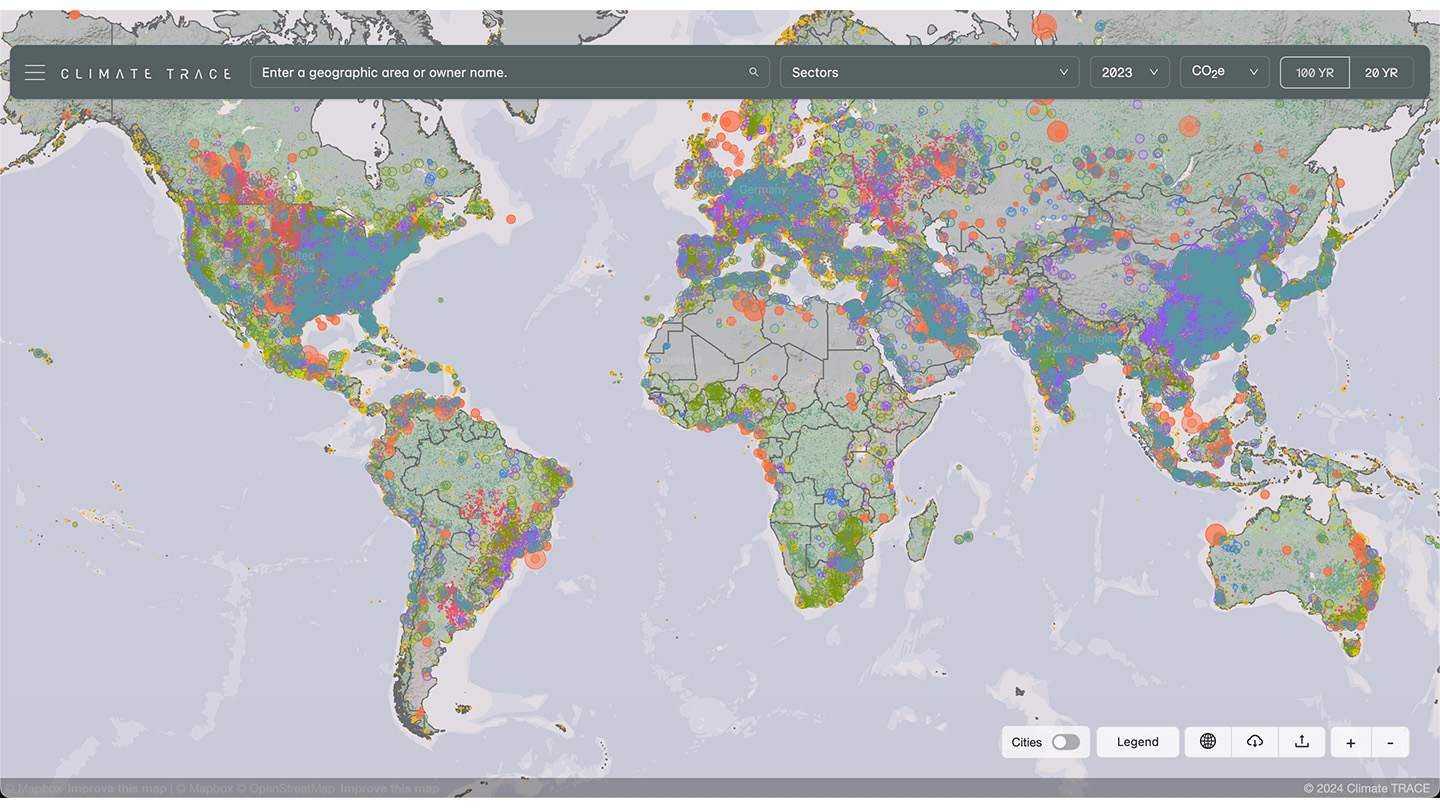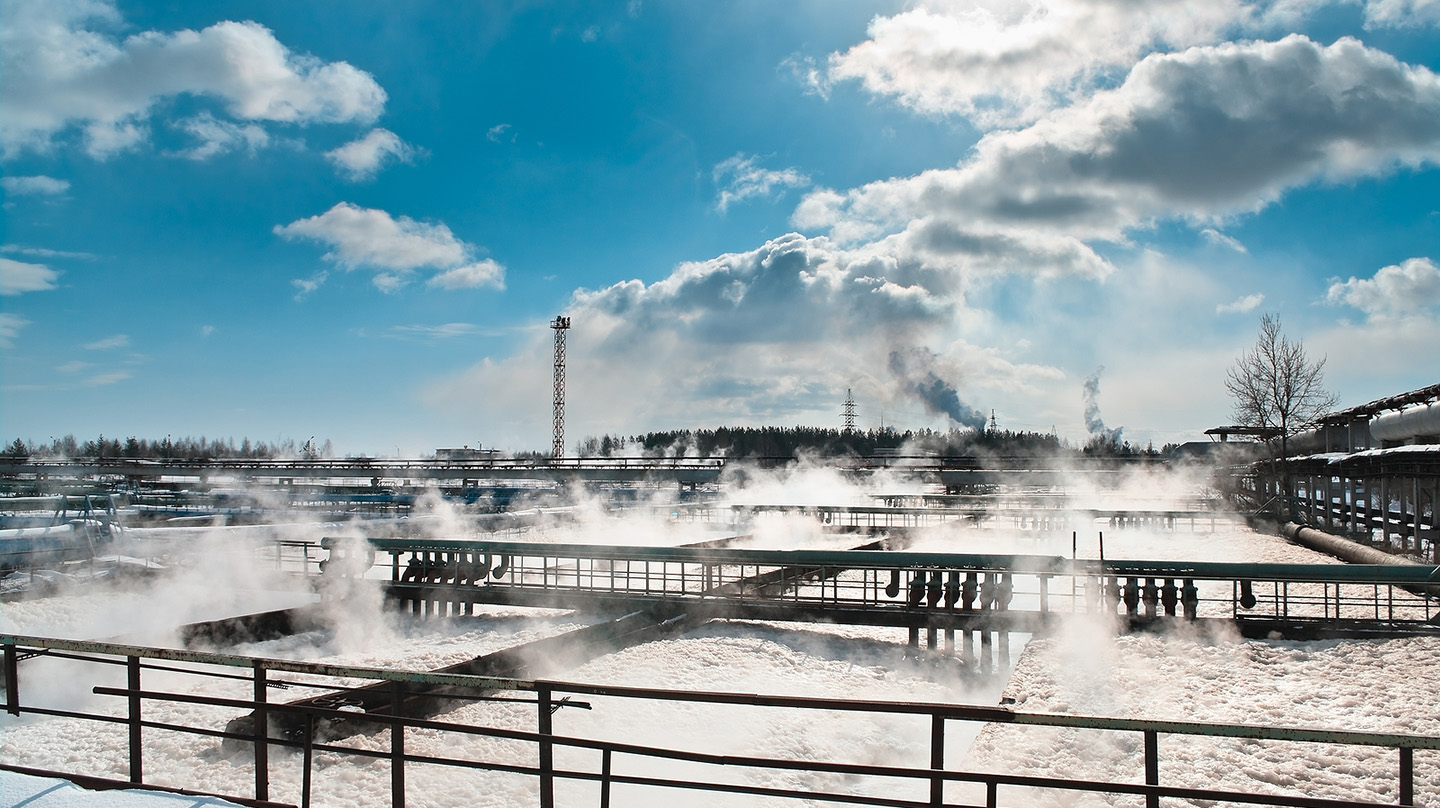News
Roads to Reservoirs: Expanding the Scope of Global Emissions Tracking

A global emissions map produced by the Climate TRACE coalition
Credit: Climate TRACE
Katie Kerrigan
Key Takeaways
- Road Transportation: APL has been leading efforts to monitor road transportation emissions for the last four years. This year, the Lab expanded efforts to also monitor non-greenhouse-gas pollutants that stem from brake wear, tire wear and exhaust.
- Wastewater Treatment Plants: APL analyzed emissions from wastewater treatment plants around the world, and determined that investment in improving more rudimentary systems such as latrines and untreated wastewater could reduce annual methane emissions by nearly 30 tons per 10,000 people. This would equal the same annual methane emission reduction gained by taking 123 million cars off the road globally.
- Anthropogenic Reservoirs and Lakes: Aquatic ecosystems, such as lakes and reservoirs, emit carbon dioxide and methane through the natural decomposition of organic matter. APL has begun using remote sensing data and data science to estimate emissions from 418 naturally regulated lakes and 6,766 artificial reservoirs.
In continued collaboration as a member of the Climate TRACE coalition, the Johns Hopkins Applied Physics Laboratory (APL) in Laurel, Maryland, has expanded its efforts to use artificial intelligence and satellite imagery to track emission sources around the world.
For the last four years, APL has led efforts to monitor road transportation emissions specifically, and has more recently increased efforts to monitor emissions from wastewater treatment plants and anthropogenic aquatic ecosystems such as lakes and reservoirs that have been built or altered by humans. The Laboratory is also producing much of Climate TRACE’s first asset-level, non-greenhouse-gas inventory.
“Our team is thrilled to be driving substantial improvements in the coalition’s data this year,” said Elizabeth Reilly, supervisor of APL’s Complex Systems Group and Climate TRACE project manager. “In addition to enhancing our models, we are significantly expanding asset coverage and launching our first monthly emissions estimates. This gets us closer to identifying where the greatest impact can be made toward emissions reduction and environmental sustainability.”

In addition to monitoring road transportation emissions, APL leads the monitoring of emissions that stem from wastewater treatment plants, which are one of the largest producers of methane emissions in the world.
Credit: Bigstock
Expanded Coverage and Increased Temporal Resolution
The team expanded road transportation analysis from 10,000 urban areas last year to now cover road segments worldwide, totaling 380 million segments. In addition to monitoring greenhouse gas emissions, the Laboratory is also estimating non-greenhouse-gas pollutants, such as particulate matter 2.5, that stem from brake wear, tire wear and exhaust.
Last year, APL also began leading the monitoring of wastewater treatment plant emissions. These numbers are estimated for the majority of the 58,000 wastewater treatment plants identified in the HydroWASTE database, whose locations are verified by the team using satellite imagery and machine learning algorithms. Wastewater treatment plants are of particular interest to analysts because they are large emitters of methane, a chemical that traps more heat in the atmosphere per molecule than carbon dioxide in shorter time frames. Climate TRACE’s latest data release contains emissions estimates from 53,620 domestic plants, which is roughly half of all domestic wastewater treatment plants in the world, and 1,228 industrial assets.
APL’s analysis revealed that roughly 60% of global methane emissions from domestic wastewater comes from untreated wastewater and latrines, despite users only accounting for 35% of the population. Investment in improving these more rudimentary systems could reduce annual methane emissions by nearly 30 tons per 10,000 people. This would equate to cutting annual methane emissions by taking 123 million cars off the road globally.
Aquatic ecosystems, such as natural lakes and human-made water reservoirs, emit carbon dioxide and methane through the natural decomposition of organic matter. APL is using remote sensing data and data science to estimate emissions from 418 naturally regulated lakes and 6,766 artificial reservoirs.
“Our goal is to get as close to full global coverage as possible,” said Marisa Hughes, the assistant program manager of Human and Machine Intelligence and APL’s climate intelligence lead. “With comprehensive data at their fingertips, leaders and policymakers can invest in effective climate mitigation tools and strategies that address every corner of our interconnected world.”
From Data to Impact
At the United Nations Climate Change Conference (COP 29) in Baku, Azerbaijan, the coalition recently revealed new features in Climate TRACE’s global data inventory and several high-impact opportunities to cut greenhouse gas emissions.
Some of the new features include increased coverage, now reaching up to 660 million assets — up from 352 million a year ago — with expanded coverage of smaller and harder-to-spot emission sources; inventories for every state and province as well as more than 9,000 urban areas; moving beyond annual to monthly data releases for all sectors and assets; and its first approximation of non-greenhouse-gas emissions.
Reducing non-greenhouse-gas emissions, such as sulfur dioxide, nitric oxide and black carbon — each of which is included in Climate TRACE’s estimates — poses a significant opportunity to remove airborne contaminants that harm health. APL played a crucial role in estimating these emissions by developing a methodology that leverages Climate TRACE’s large set of facility-level greenhouse gas emissions data to estimate non-greenhouse-gas emissions.
“Non-greenhouse-gas data at the asset level can be profoundly impactful for both policymakers and researchers,” said Reilly. “We can better identify where exactly these pollutants are coming from and how they will impact people in our neighborhoods.”
As Climate TRACE data becomes more accurate and more frequently available, the coalition aims to provide clearer insights into practical, achievable climate solutions.
Related Program and Program Manager
Areas of Impact
Mission Area
The Applied Physics Laboratory, a not-for-profit division of The Johns Hopkins University, meets critical national challenges through the innovative application of science and technology. For more information, visit www.jhuapl.edu.